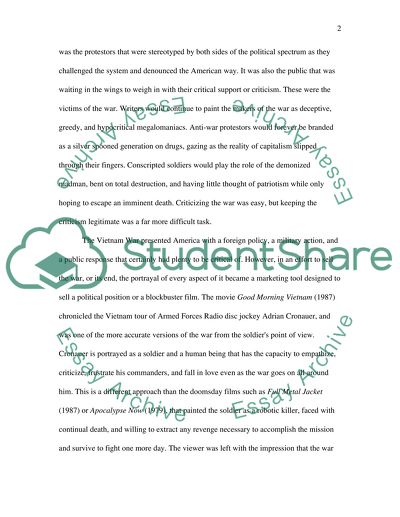Cite this document
(“Culture's Portrayal of the Vietnam War Essay Example | Topics and Well Written Essays - 1750 words”, n.d.)
Culture's Portrayal of the Vietnam War Essay Example | Topics and Well Written Essays - 1750 words. Retrieved from https://studentshare.org/history/1501422-cultures-portrayal-of-the-vietnam-war
Culture's Portrayal of the Vietnam War Essay Example | Topics and Well Written Essays - 1750 words. Retrieved from https://studentshare.org/history/1501422-cultures-portrayal-of-the-vietnam-war
(Culture'S Portrayal of the Vietnam War Essay Example | Topics and Well Written Essays - 1750 Words)
Culture'S Portrayal of the Vietnam War Essay Example | Topics and Well Written Essays - 1750 Words. https://studentshare.org/history/1501422-cultures-portrayal-of-the-vietnam-war.
Culture'S Portrayal of the Vietnam War Essay Example | Topics and Well Written Essays - 1750 Words. https://studentshare.org/history/1501422-cultures-portrayal-of-the-vietnam-war.
“Culture'S Portrayal of the Vietnam War Essay Example | Topics and Well Written Essays - 1750 Words”, n.d. https://studentshare.org/history/1501422-cultures-portrayal-of-the-vietnam-war.


